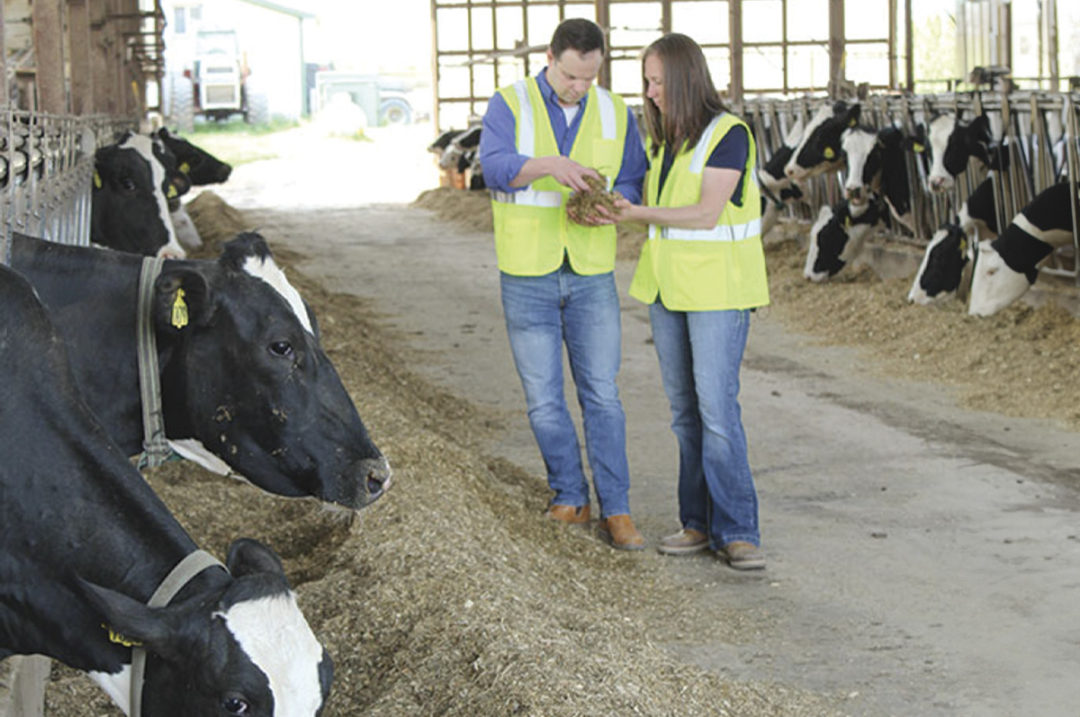Pounds of milkfat and milk protein shipped, also known as milk component yield (MCY), accounts for more than 75% of the milk check. With milk volume supply constraints in play, maximizing MCY has never been more important.
Milk containing higher concentrations of fat and protein produces more cheese, butter and other higher-value dairy products. Dairy producers can capture some of that value by focusing on increasing MCY.
The good news is: Producers can start making changes almost immediately – even without long-term investments in herd genetics. Milk composition is highly influenced by the ration and feeding management. One of the keys to achieving this goal is closely managing neutral detergent fiber digestibility (NDFD) in the ensiled forage base of the ration.
Getting to know the fiber components of a ration
In general, NDF measures the slowest-digesting portion of all the forage components. It is important to fully understand the NDF components of the forage to ensure a balanced and optimized ration for productivity. There are three measurements producers and nutritionists evaluate when it comes to NDF:
- NDF digestibility over a period of time (NDFD)
- Rate of digestibility (kd) of the potentially digestible NDF fraction (pdNDF)
- Ballast or “fill” of NDF (undigestible NDF, or uNDF240 in forages)
Taken together, this tells us how digestible the forages are on the farm, how quickly the digestion takes place and what the limitations to digestion or potential intake might be.
NDF digestibility in today’s crops
Ensuring high-forage NDFD varies between crop types, weather influences, field management techniques, ensiling expertise and feed management in the silo and through mixing and delivery. For example, in the absence of irrigation, prolonged periods of drought through the growing season can reduce haylage yields, push the crop to early maturity and, therefore, reduce its NDFD. The weather before and after silking can influence both stover digestibility and potential grain fill with whole-plant corn crop destined for ensilage.
The convenient access to a rapid turnaround of comprehensive near-infrared reflectance spectroscopy (NIR) forage analysis results by U.S. feed and forage labs now takes the guesswork out of ensiled forage analysis. A good representative sample on a regular and frequent basis allows both the producer and consultant to have close insight into their ensiled forage inventory quality and how it changes over time.
There were wide regional variations in weather patterns in 2020, influencing both ensiled forage yield and quality. In the Northeast and parts of the Midwest, many producers had to break into their 2020 haylage early, indicating that forage inventory levels were already low. Similarly, in those same areas some have also started on new-crop corn silage even though the starch digestibility and rate of starch digestion will not be as high as when left in store for two to three months. Some farms are seeing higher-than-usual fecal starch losses (greater than 3% dry matter) and having to compensate in the ration accordingly.
Improving NDF digestibility to capture production gains
It’s a safe bet all producers will have the occasional year where they are saddled with low-quality forages – even when putting forth their best crop management efforts. In these years, adding an active dry yeast (ADY) probiotic to the ration can help cattle extract better NDFD and a little more energy from lower-quality forage.
A study published in Animal Feed Science and Technology showed Saccharomyces cerevisiae CNCM I-1077 fed to cattle showed it increased in-situ NDFD even from low-quality corn silage.
S. cerevisiae CNCM I-1077 also has been proven to help producers manage subacute ruminal acidosis (SARA). In studies, S. cerevisiae CNCM I-1077 increased the total in-vivo NDF digestibility of a ration by 4.9 points, which resulted in an increase of 2.6 pounds of energy-corrected milk (ECM).
Cows supplemented with S. cerevisiae CNCM I-1077 can experience increased milk yield, milkfat and milk protein. In lactating dairy cow performance trials, cows fed S. cerevisiae CNCM I-1077 produced 4.5% more milkfat and 3.3% more protein.
Management factors
Management practices that positively alter feeding behavior and improve rumen function can increase MCYs. These include:
- Regular and frequent checks on wet feed and ensiled forage dry matters with adjusted dry matters applied in the total mixed ration (TMR) formulation
- Well-mixed TMR evenly distributed along the full length of the feedbunk
- Regular and frequent push-up of TMR in front of cows to minimize slug feeding
- Not allowing cows to run out of TMR before fresh TMR is fed the next day
The good news is: These practices help any kind of herd maintain productivity. A daily commitment to the basics will never steer you wrong.
NDF and ration management yields cash back
Will all this attention to ration management be worth it in the end? I believe these practices are achievable to implement in most operations – and the return on investment is there.
Let’s translate this effort into real money. Even at component pricing of $1.70 for butterfat and $4 for protein, that means for every 100 cows an additional $33.60 additional income per day or $12,264 each year.
There are longer-term changes producers can make to focus on MCYs. However, focusing on feed management and ration changes are relatively quick to implement. The fiber in your forage should increase your herd’s productivity by encouraging feed intake and powering rumen function for improved MCY production. Make fiber work smarter, and harder, for your cows.
References omitted but are available upon request by sending an email to the editor.







